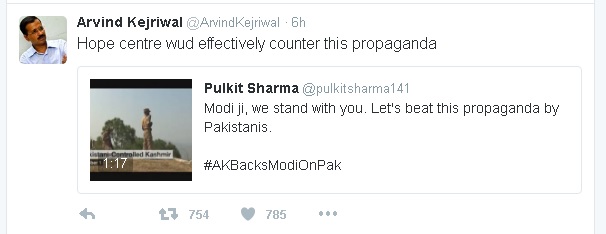So, Rahul baba has done it again. He was mocked and tortured by a world that didn’t understand him. The shy, introverted little prince was deprived of his birthright by vicious street bullies. Until he could no longer bottle up his anger against the bullies and ended up calling them “khoon ke dalal”. You know, like this:

The meat-headed and ham-handed bullies have responded to his outburst by charging back at poor Rahul baba with twice the intensity. They want the system to come down on him twice as hard, to hit him like a ton of bricks. They want to scream at him, rail at him and howl at him. They don’t want to understand him, they just want to punish him because they think that punishment is the answer to everything. As if that can do any good.

Their imagination is limited by living for far too long in a straitjacketed, ruthlessly competitive world with unforgiving rules of engagement. Now they think it is their turn to hit back at the Vice President of India’s oldest political party. This is the plane they live on: a world without compassion or consideration. What they refuse to see, or should we say, what they don’t dare to see is the exotic world inside Rahul baba’s mind.

I can’t help shaking in anger. When will people realize that every politician develops in her/his own way and becomes her/his own person? They want to fit everyone through the same entrance and just push them into the rat race. Yes, political parties have their compulsions. There is cutthroat competition on the political scene. Every political party wants their leader to sweep elections: 73 out of 80, 67 out of 70. Anything less is considered a grave sin. If political parties are so keen on racing each other, then why do they ask their current leaders to give birth to their future leaders…if they want to race, they should just breed race horses…damn it!
Has any political party stopped to think that the fingers on one hand are not all of the same length? No, they are engaged in pulling at each finger and trying to make them all equal. The average Congress cadre may look at the statement on “khoon ki dalali” and ask: what is the gain? How will this help Congress win elections? Because that is all it comes down to: winning elections. Has anyone paused to think about Rahul baba’s bold brush strokes with his use of language, the power of his feelings and the depth of his emotions? No!
But fortunately for Rahul baba, he has finally found good mentors who understand.
Feel sorry for #Rahul. We all know what he was trying to say but he sounds so ineffective and uses wrong phrases in Hindi.
— Saba Naqvi (@_sabanaqvi) October 6, 2016
Exactly! We have to understand that when it comes to “special” politicians like Rahul baba, we cannot go by what their handwriting, or their spelling or their words. We have to go by our instinctive understanding of his feelings so as to properly appreciate his intelligence.
When you think in English & speak in Hindi, you end up saying things which roll out all wrong…Khoon ki dalali…Maut ka saudagar…
— Rahul Kanwal (@rahulkanwal) October 6, 2016
So true! “Special” politicians tend to roll things out the wrong way all the time. Instead of questioning them, we should roll with them. That is another enlightened person right there!
Even the principal of the school agrees:
You should understand the feeling of Rahul Gandhi when he made the statement: Kapil Sibal, Congress #KhoonKiDalaliFight
— TIMES NOW (@TimesNow) October 7, 2016
Folks, this can be the moment. This can be the turning point when we extend a hand of compassion towards our “special” politicians. It will help us become a better nation, a better democracy and a better society. We can give them the understanding they need, so that we can finally see them for the gems they are:

Kho na jayein ye taare zameen par.

















